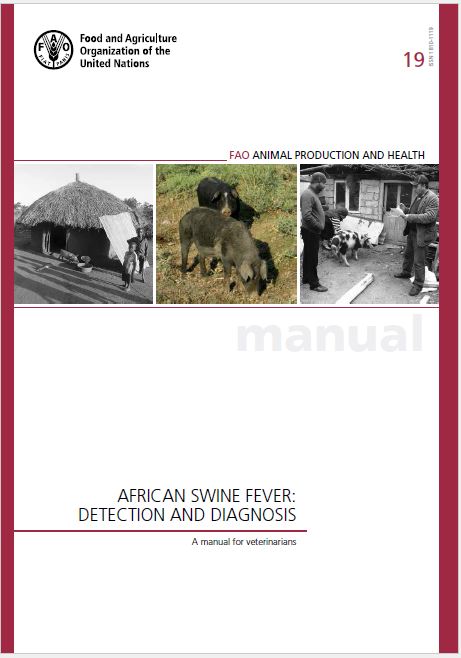African Swine Fever: Detection & Diagnosis

The purpose of the manual is to provide veterinary professionals, para-professionals, and laboratory diagnosticians with the information they need to promptly diagnose and react to an outbreak or case of ASF. Pig farmers, hunters and forest managers will also benefit.
Any statement made in this manual is intended to provide guidance and should not be treated as a prescription.
The manual provides general information on the disease and its causes, including epidemiology, transmission pathways and geographic distribution. It then follows chronologically with the detection and diagnosis of ASF, from field diagnosis (clinical signs, postmortem findings and differential diagnosis) to laboratory confirmation (i.e. all main techniques for the detection of both virus and antibodies). Included are recommendations on how to sample, pack and transport specimens from the field to the laboratory, and the immediate actions required at farm level when an outbreak is suspected. Although in less detail, the manual also covers ASF awareness-raising, prevention and control. Finally, sources of assistance are recommended, together with suggestions for further reading.
African swine fever (ASF) is a contagious viral disease that affects pigs of all ages, inducing a haemorrhagic fever. It can appear in a variety of forms ranging from peracute, acute, subacute, to chronic and unapparent. It is most often recognized in the acute form with an associated lethality of up to 100 percent.
The copyright belongs to FAO, FAO encourages the use, reproduction and dissemination of material in this information product. Except where otherwise indicated, material may be copied, downloaded and printed for private study, research and teaching purposes





